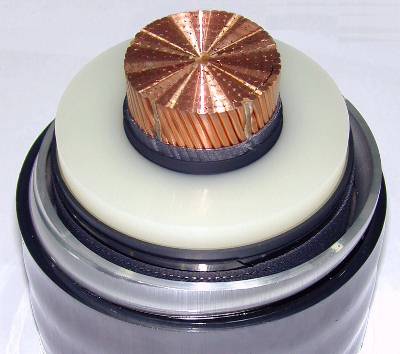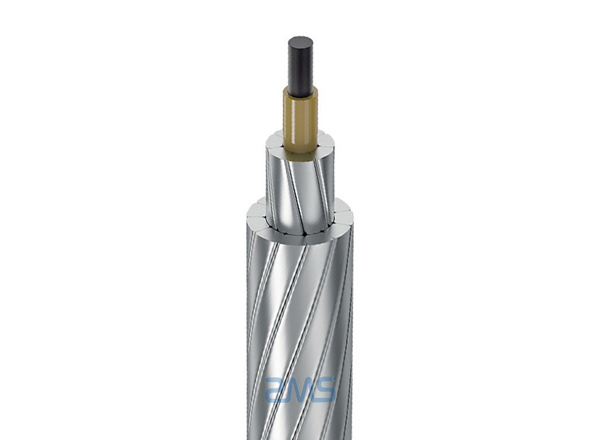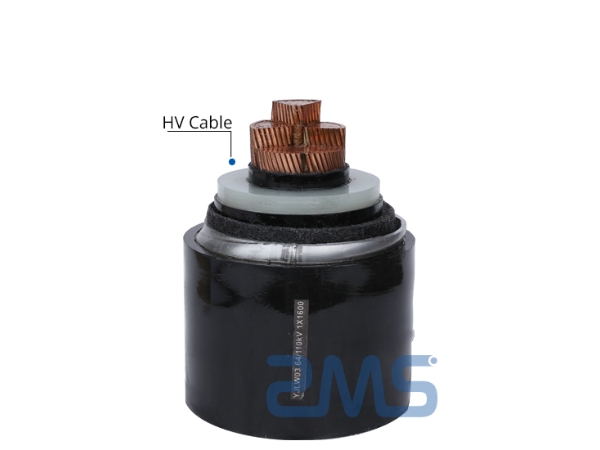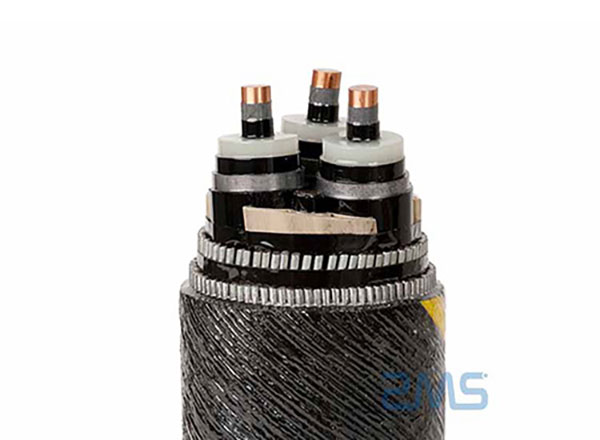High Voltage Cable ( HTA )
A high voltage cable is a type of cable used to carry electricity at high voltages (generally greater than 35 kV) over long distances. The very high voltage cable for a voltage greater than 110KV.
They are usually made from insulating materials such as rubber, polyvinyl chloride or thermoplastic sheath, and can be buried underground or installed on electricity pylons.
High voltage cables are used to transport electricity from power plants to distribution power networks, where they are transferred at lower voltages to power buildings and electrical appliances.
ZMS is a professional cable supplier and can provide you with a full range of high voltage electrical cables.
High voltage overhead cable
Structure : These cables are made of multi-stranded copper or aluminum conductors, XLPE insulation, a shielding layer and a weather-resistant outer jacket. They may also contain a steel core to increase mechanical resistance to weather conditions.
Product parameters :
Tension nominale : 35kV and more
Conductive material : Copper or aluminum
Insulating material : XLPE
Operating temperature : -40°C to +90°C
Tensile strength : ≥ 5000 N
Applications : Ideal for long distance transmission in open environments, such as rural networks, mountainous regions and outdoor power lines.
Features :
An underground high voltage cable is a type of cable used to transport electricity at high voltages in densely populated areas or where it is desired to minimize the visual impact on the environment. It is buried underground to protect drivers from outside weather conditions and avoid visual disruption.
Application :
Les câbles haute tension enterrés sont utilisés pour transporter de l’électricité sur de courtes distances dans les zones densément peuplées, telles que les villes et les centres urbains, où les câbles aériens ne sont pas souhaitables en raison de leur impact visuel.
Ils sont également utilisés pour connecter des centrales électriques à des réseaux de distribution pour alimenter les bâtiments et les équipements électriques locaux. Ces câbles peuvent également être utilisés pour connecter des systèmes électriques distants pour améliorer la fiabilité et la sécurité du réseau électrique.
Features :
A submarine high voltage cable is a type of cable used to carry electricity at high voltages below the surface of the water, usually across seas, oceans or lakes. It is designed to withstand harsh underwater environmental conditions, such as storms, the currents, waves and rugged seabed.
Application :
Underwater high-voltage cables are used to transport electricity between continents, islands and remote areas to connect remote power systems. They can also be used to connect offshore wind platforms, offshore power plants and underwater electrical equipment at the coast.
These cables are a reliable and durable way to transport electricity over large distances and are important in improving the reliability and security of the power grid.
Characteristics of ZMS high voltage cables
ZMS high voltage cables are manufactured with quality materials to ensure maximum durability and optimal performance. Here are some of their main features :
Robust design : Our cables have an insulating sheath made of materials such as cross-linked polyethylene (XLPE), guaranteeing excellent insulation and resistance to high voltages.
Quality conductive materials : Our cables use high purity copper or aluminum, offering superior conductivity.
Reinforced protection : Thanks to layers of protection against water and a resistant outer sheath, our cables can be used in underground environments, aerial or underwater.
Long-term reliability : Our cables are designed to provide exceptional lifespan, often exceeding 30 years with minimal maintenance.
What Are the Applications of High Voltage Cables ?
High voltage cables are critical elements for the transmission and distribution of electricity. They play a fundamental role in our daily lives by powering households, businesses and industries.
The most common application of high voltage cables is the transmission of electricity over long distances, often from power plants to consumption areas.
High voltage cables can be buried or overhead and are characterized by their ability to transport large quantities of electricity with minimal energy loss.
Besides the transmission, high voltage cables can also be used for energy storage.
For example, Wind energy storage systems use high-voltage cables to store energy produced by wind turbines during periods of excess production, in order to provide it when demand is high.
Finally, high voltage cables are also used for the interconnection of electrical networks in different countries.
This allows the energy produced by power plants to be shared with other countries and ensures a reliable electricity supply when needed.. In conclusion, high voltage cables are a key part of our electrical infrastructure.
How to Recognize High Voltage Lines ?
High voltage lines are an essential part of our electricity system, transporting electrical energy from a source to consumption areas. Although they are often hidden in rural or underground areas, it is important to know how to recognize them to avoid potential dangers.
Here are some characteristics that can help recognize high voltage lines :
Tall and spaced pylons : High-voltage line pylons are generally tall and spaced apart to allow the cables to extend between them without touching each other.. The pylons can be made of steel, made of wood or concrete and can be recognized by their height and the distance between them.
Thick cables : High voltage cables are often thicker than common electrical cables, which makes them more easily visible. Cables can be made of steel, copper or aluminum, and can be covered with an insulating sheath to minimize the risk of electric arc or energy leak.
Distinctive markings : High voltage line pylons can be marked with specific colors to distinguish them from other power lines. Colors may vary by region, but they may include red and white to indicate high voltage lines.
Danger signs : Areas around high voltage lines can be marked with warning signs indicating the potential dangers of touching the cables or pylons. Signs can also be installed to prohibit climbing or the installation of objects such as television antennas.
It is important to respect high voltage lines and never touch them, even when they are turned off. High voltages can cause serious injury or death, and arcing can cause fires or other damage.
Choose High Quality Products from ZMS
We are proud to introduce our range of premium quality high voltage cable products.
ZMS is committed to provide reliable products and durable that meet the highest performance and safety requirements.
With a focus on cutting-edge technology and manufacturing excellence, we are determined to satisfy the needs of our customers in the industrial sectors, commercial and residential.





